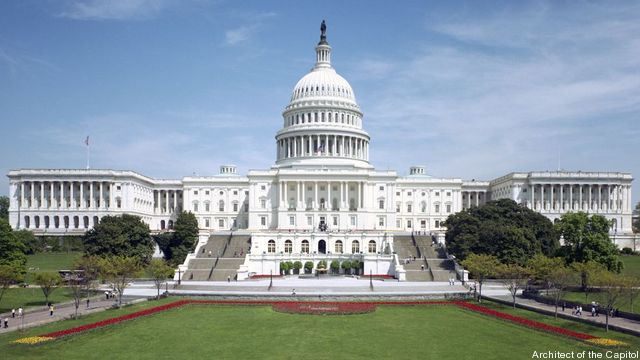SAC-D Takes Stand For SpaceX & For Army National Guard – Sort Of
Posted on

CAPITOL HILL: This morning’s Senate subcommittee mark-up of the annual defense spending bill meant good news and extra money for a host of interests, from upstart rocket-maker SpaceX to the giant Boeing company. On the bitterly contentious issue of the Army National Guard’s endangered Apache helicopter fleet, however, the Senate defense appropriations subcommittee put down a marker instead of drawing a line in the sand.
Guard Apaches: A Shot Across The Army’s Bow
The bill the SAC-D passed by voice vote this morning adds eight AH-64E Apache Guardians, the latest model, specifically for the Army National Guard. (The subcommittee didn’t release a dollar figure, but the Army says each 64E costs about $20 million). That’s a shot across the bow of the Army’s Aviation Restructuring Initiative (ARI), which would strip the Guard of all its Apaches and put all attack helicopters in the active-duty force. But it’s not more than a shot.
The bill opposes any transfer of Apaches from the Guard to regular Army units in fiscal year 2015 — but it doesn’t actually prohibit anything, and the transfers weren’t supposed to start until 2016 anyway, as a staffer admitted when I pressed him on the issue after the hearing. “We have report language saying we disagree with the transfer,” he told me and another reporter. “We don’t have a bill provision.”
Report language carries real political weight — executive branch agencies ignore it at their peril — but no legislative force. So, I asked, will actual lawmaking have to wait for the 2016 budget cycle? “It depends what the authorizers do,” the staffer said, referring to the House and Senate Armed Services Committees, which set defense policy. (Appropriators just write the checks, in theory, though HASC and SASC often complain the appropriations bills trespass into policymaking in practice). There are proposals to refer the entire issue of Army-Guard balance to an independent commission, which would probably entail putting the current plan on hold until the commission can report. So, the staffer said, “if the authorizers create a commission, that could delay further activities.” But, he emphasized, that’s a matter for the authorization bills, not one the appropriators plan to take up.
Space-X & Other Winners
In contrast to the Apaches issue, subcommittee chairman Richard Durbin was unequivocal in his support for SpaceX, the upstart start-up with ambitions to challenge aerospace giants Lockheed Martin and Boeing for contracts to launch Air Force and spy agency satellites. Cost per launch has skyrocketed in recent years, and Durbin blamed that on the lack of competition, since Boeing and Lockheed have formed a single United Launch Alliance. SpaceX insists they can offer an alternative, so “let’s give them the chance,” Durbin said.
So the bill adds $125 million to speed up certification of any qualified vendor, e.g. SpaceX, a key step where the Air Force has been lagging. It also ramps up competition for an alternative rocket engine — “I hope that it’s an American alternative,” Durbin told reporters — to replace the Russian-made RD-180 on which the Boeing-Lockheed rocket currently relies, which recent events have made geopolitically more than a little awkward.
The news in the bill is hardly all bad for the big contractors, however. SAC-D fully funds Lockheed’s troubled F-35 Joint Strike Fighter program, at 34 aircraft. It adds $1.3 billion for 12 Boeing EA-18G Growlers, whose electronic warfare capabilities are central to the Navy’s vision of high-tech “Air-Sea Battle.” Shipbuilder Huntington-Ingalls Industries scores a double on the shipbuilding front, with $848.7 million for the modernization of the USS George Washington — which the administration had said sequestration cuts might force it to retire — and $800 to begin incremental procurement of a twelfth LPD-17 amphibious warship.
The bill also adds $293 million for various armored vehicle programs, which always get a gift from Congress. SAC-D also allows the Army to proceed with its Armored Multi-Purpose Vehicle (AMPV) program with only one competitor, albeit while directing a $4 million study of whether the Stryker vehicle — currently not in the running — could be an alternative at some future point.
On the Air Force A-10 Warthog, which the service wants to retire, the subcommittee predictably sided with most of the rest of Congress in funding the famed ground-attack plane to stay in service.
So how does SAC-D pay for all these additions? By cutting “approximately $11.7 billion” in “517 specific cuts.” We’re still waiting on the subcommittee to publish a list.
But Durbin said he was confident his colleagues would accept the cuts. “We’ve worked really closely with members and their blood pressure is not up. That’s good,” he told reporters with a chuckle. “After living through sequestration…. many of the members have been conditioned to hard, hard choices, and our bill tried to strike a balance. And most of them are, if not 100% in favor of the bill, in favor enough to vote for it.”
Subscribe to our newsletter
Promotions, new products and sales. Directly to your inbox.
